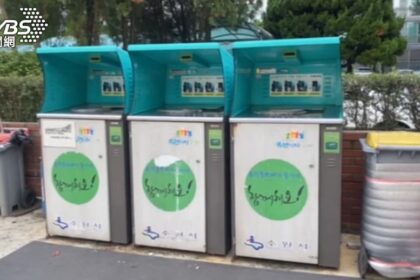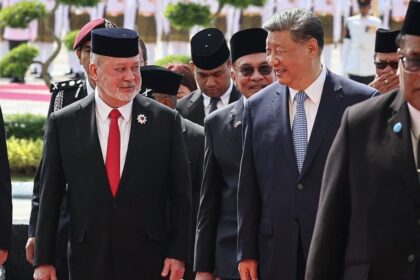Indonesia’s Coal Export Boom Falters Amid Global Shift to Higher-Grade Coal
Indonesia, long the world’s largest exporter of thermal coal, is facing a dramatic shift in its fortunes. The country’s coal industry, a pillar of its economy, is under mounting pressure as its two biggest customers—China and India—are slashing imports of Indonesian coal in favor of higher-calorific value (CV) alternatives from other suppliers. This strategic pivot is reshaping global coal trade flows and forcing Indonesian miners to rethink their business models, with far-reaching implications for the country’s economy and the global energy market.
- Indonesia’s Coal Export Boom Falters Amid Global Shift to Higher-Grade Coal
- Why Are China and India Turning Away from Indonesian Coal?
- Impact on Indonesian Coal Exports and the Economy
- Winners and Losers in the Global Coal Market
- Indonesia’s Strategic Response: Domestic Market and Smelting Industry
- Long-Term Risks and the Path Forward
- In Summary
Why Are China and India Turning Away from Indonesian Coal?
The core of the issue lies in the quality of coal. Indonesian coal is predominantly of medium and low calorific value, meaning it produces less energy per ton compared to higher-grade coal from countries like Australia, Mongolia, South Africa, and Russia. As global coal prices have fallen, the price gap between low-grade and high-grade coal has narrowed, making the latter more attractive to buyers seeking greater energy efficiency and lower emissions.
Vasudev Pamnani, director at Indian coal trader I-Energy Natural Resources, explains the economic rationale:
“Higher CV coal is more expensive, but produces more energy for every dollar spent at current prices. One million tons of higher CV coal can replace 1.2-1.3 million tons or even 1.5 million tons from Indonesia.”
This means that power plants and industrial users in China and India can meet their energy needs with less coal if they opt for higher-grade varieties, reducing both costs and emissions.
Competition from Alternative Suppliers
China and India are not just buying less Indonesian coal—they are actively sourcing from new suppliers. In the first five months of 2025, Mongolia’s coal exports to China surged by 44.8%, while South Africa’s shipments to India jumped 26.1%. Both countries have also increased imports from Kazakhstan, Colombia, Mozambique, and Tanzania, the latter of which has emerged as a new player in the global coal market since the Russia-Ukraine conflict disrupted traditional trade routes.
In China, discounted Russian coal of similar grades has further squeezed Indonesian exports. Kpler analyst Zhiyuan Li notes that Indonesian medium- and low-calorific coal is struggling to compete with these cheaper alternatives. Meanwhile, Australia’s high-grade coal has gained market share in China, and Indian traders are diversifying their sources to include more energy-dense options.
Domestic Production Boom in China and India
Another major factor is the rapid increase in domestic coal production in both China and India. China’s output hit a record 4.9 billion tons, while India surpassed the 1-billion-tonne mark. This surge in local supply is part of a broader strategy to enhance energy security and reduce reliance on imports, especially as both countries seek to manage costs and control emissions.
Li Xuegang, an analyst at the China Coal Transportation and Distribution Association, highlights the policy shift:
“The government’s tighter emission controls will slash demand for low-heating and poor-quality grades.”
China’s benchmark price for thermal coal has slumped to a four-year low, and the country’s utilities are increasingly able to source better-quality coal domestically or from nearby suppliers, further eroding Indonesia’s market share.
Impact on Indonesian Coal Exports and the Economy
The numbers tell a stark story. In the first five months of 2025, Indonesia’s thermal coal exports to China and India fell by 12.3% and 14.3%, respectively—outpacing the overall drop in coal imports by these countries. Indonesia’s total coal exports dropped 12% to 187 million tons during the same period, according to data from analytics firm Kpler. This is the lowest level in three years and signals a potentially long-term decline.
China and India together account for nearly two-thirds of Indonesia’s coal exports, so the impact is profound. The coal sector contributes about 3.6% of Indonesia’s economic activity and employs tens of thousands of people. A sustained downturn threatens not only corporate profits but also government revenues and regional employment.
Operational and Regulatory Challenges
With export opportunities shrinking, Indonesian coal miners are scrambling to realign their strategies. Many are diverting sales to the domestic market, particularly to the rapidly expanding mineral smelting industry, which offers better profit margins than the heavily regulated power utility sector. Domestic coal deliveries now make up 48.6% of national supply—the highest share in over a decade.
However, domestic demand remains limited. National coal output is projected to decline from 836 million tons in 2024 to below 800 million tons this year, while domestic consumption is expected to reach only 250–260 million tons, up from 233 million last year. This leaves a significant surplus, leading to underutilized mining equipment and operational inefficiencies.
Ardhi Ishak Kosen, head of industrial relations at the Association of Indonesian Mining Professionals (Perhapi), voices concern:
“Mining equipment is underutilized, some machines stand idle, while others run on reduced hours or not at all.”
Miners are also urging the government to roll back regulations that add financial strain, such as mandatory biodiesel blending and requirements to retain a portion of export foreign exchange earnings in the country. Some buyers have pointed to Indonesia’s coal reference price (HBA), which remains higher than prevailing global market rates, as a factor contributing to the export decline.
Winners and Losers in the Global Coal Market
The shift by China and India has created new winners in the global coal market. Mongolia and South Africa have seen their shares in China and India, respectively, reach record highs. Improved infrastructure and logistics have made railborne coal imports from Mongolia and Russia more cost-effective for China, while South African coal is increasingly favored by Indian buyers.
Australia, Kazakhstan, Colombia, Mozambique, and Tanzania have also gained ground as alternative suppliers. The diversification of supply chains is partly a response to geopolitical tensions, such as the Russia-Ukraine conflict, which has disrupted traditional trade flows and encouraged buyers to seek new partners.
Price Trends and Market Dynamics
Global coal prices have been on a downward trend since late 2023. The Australian Newcastle 6,300 kcal/kg FOB coal price averaged $104.41 per ton in May 2025, down 26.5% from a year earlier. Indonesian and Australian coal indexes, which reflect grades preferred by Chinese buyers, have both declined, with the Australian benchmark falling faster. This has made higher-grade coal more accessible to Asian buyers, accelerating the shift away from Indonesian supply.
Shipping and logistics have also played a role. Improved rail links from Mongolia and Russia to China have reduced transport costs, while oversupply in the dry bulk shipping market has kept freight rates low, making it easier for buyers to source coal from a wider range of suppliers.
Indonesia’s Strategic Response: Domestic Market and Smelting Industry
In response to falling exports, Indonesian miners are increasingly targeting the domestic market, especially the mineral smelting industry. Nickel smelters, in particular, have become a bright spot, offering better prices than the power sector or international buyers. The government’s domestic market obligation (DMO) policy requires a portion of coal production to be sold locally, and smelters are expected to absorb 31.2% of this year’s DMO, while electricity generation remains the dominant consumer at 58%.
Gita Mahyarani, acting executive director of the Indonesian Coal Mining Association (APBI), explains the shift:
“Producers are prioritizing the fulfillment of existing contracts. They are especially focusing on countries still reliant on medium-calorific value coal in the Southeast Asian region, where the use of coal-fired power plants remains high and continue to show solid demand for [MCV] coal, and their proximity offers a logistical advantage.”
Cost efficiency has become a top priority as mining firms look to maintain competitiveness in a challenging market. However, the growth of local demand is limited, and overproduction remains a risk.
Regulatory and Policy Hurdles
Industry leaders are calling for regulatory relief to help weather the downturn. Ardhi from Perhapi suggests that coal producers should improve operational efficiency and reduce capital expenditures. He also urges the government to revoke policies that increase financial burdens, such as the mandatory use of B40 blended biodiesel and the requirement to keep a portion of export foreign exchange earnings in the country.
Some buyers argue that Indonesia’s coal reference price (HBA), which is used as the basis for export shipments, is too high compared to global market rates and has contributed to the decline in exports. The HBA was set at $98.61 per ton for the second half of June 2025, down 2.33% from earlier in the month, but still marking a 23% decline since March.
Long-Term Risks and the Path Forward
Experts warn that the current downturn may signal a longer-term decline for Indonesia’s coal industry. The sector is heavily reliant on just a few buyers, and as China and India ramp up domestic production and shift to higher-grade coal, Indonesia’s export prospects are likely to remain constrained.
Hazel Ilango of the Energy Shift Institute cautions:
“These are signs that Indonesian coal miners have to start taking seriously as well.”
There are additional risks. Most Indonesian coal companies are tightly controlled by insiders, limiting flexibility and innovation. Regulations such as domestic supply rules and high royalties also squeeze profits, while access to global financing is restricted. The private sector and investors are generally focused on short-term gains rather than long-term transition plans, and government policies are often inconsistent.
Indonesia faces a policy dilemma: it has pledged to cut emissions and transition to clean energy, but continues to expand coal production and approve new plants. Domestic subsidies keep coal cheap, but abrupt export bans have disrupted global markets. Meanwhile, the state utility plans to retire coal plants early under a $20 billion transition deal, even as new ones are being built to support the smelting industry.
Broader Implications for the Global Energy Transition
The shift away from Indonesian coal by China and India is part of a broader global trend toward cleaner energy and greater efficiency. More than 75% of the growth in energy demand in China last year was met by clean energy sources. India is also investing heavily in renewables and seeking to reduce its dependence on imported coal.
For Indonesia, the challenge is to diversify its economy and energy sector to avoid being left behind as the world moves toward a lower-carbon future. The current crisis may serve as a wake-up call for policymakers and industry leaders to accelerate the transition to cleaner energy and more sustainable economic growth.
In Summary
- Indonesia’s coal exports to China and India have fallen sharply as both countries shift to higher-grade, more energy-dense coal from alternative suppliers.
- Global coal prices have declined, narrowing the cost gap between low- and high-grade coal and making the latter more attractive to buyers.
- China and India are ramping up domestic coal production and diversifying imports, further reducing reliance on Indonesian supply.
- Indonesian miners are pivoting to the domestic market, especially the mineral smelting industry, but local demand is limited.
- Operational inefficiencies, regulatory burdens, and policy contradictions are compounding the industry’s challenges.
- Experts warn that the downturn may signal a longer-term decline, and urge Indonesia to accelerate its transition to cleaner energy and economic diversification.




![萧秉治 Xiao Bing Chih [ Project X ] 巡回演唱会专辑 Live Tour Album ::: 数位平台全 …](https://asiadaily.org/wp-content/uploads/2025/06/3db26ad412c3a4096ddc330e0cf4feca65904a3f-150x150.jpg)







